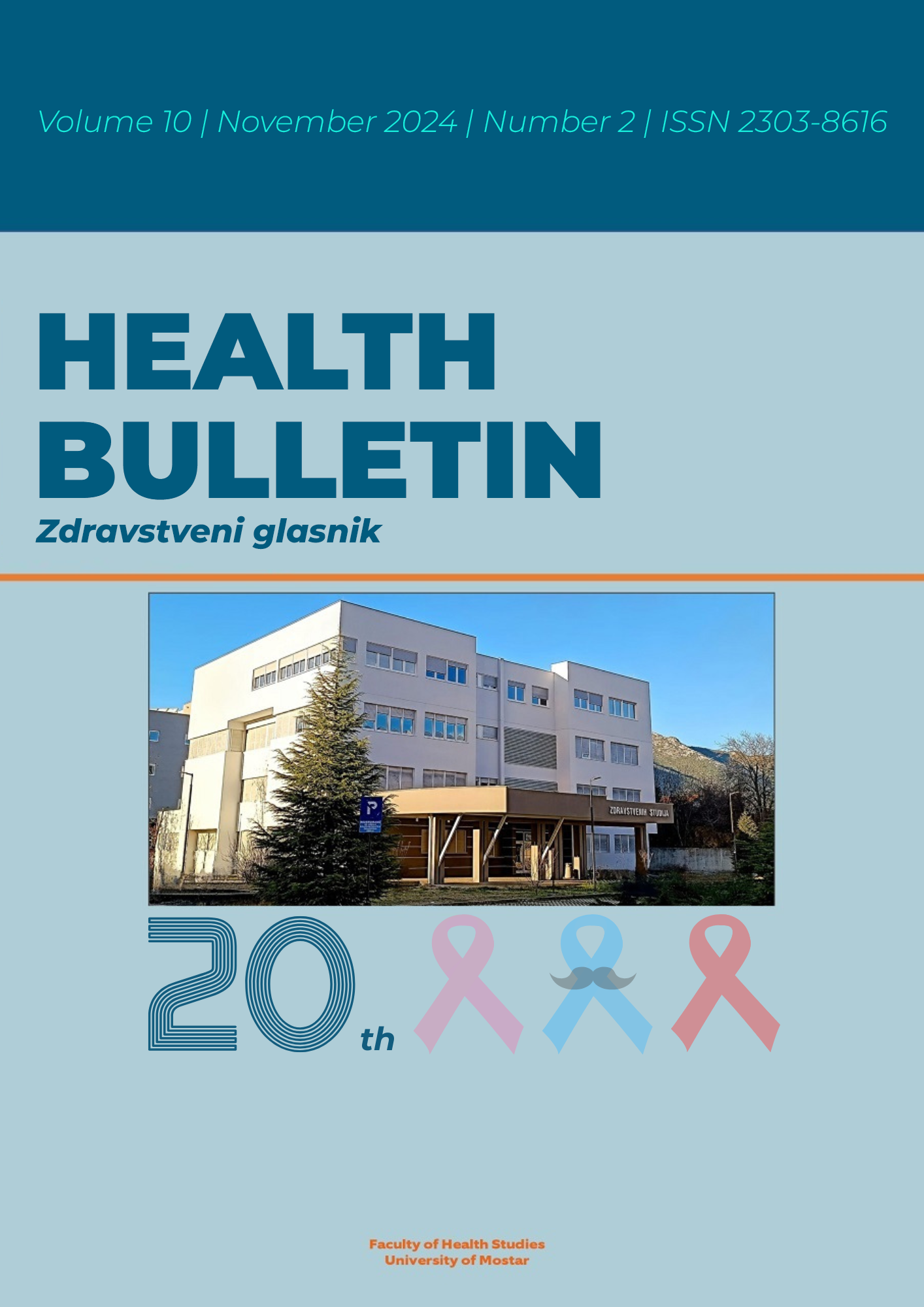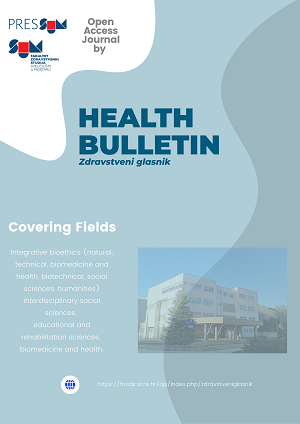INCIDENCE OF PULMONARY THROMBOEMBOLISM IN PATIENTS SUBJECTED TO COMPUTERIZED TOMOGRAPHY AND PULMONARY ANGIOGRAPHY AT THE UNIVERSITY CLINICAL HOSPITAL MOSTAR
Keywords:
: Pulmonary thromboembolism, incidence, computed tomography, pulmonary angiography, clinical diagnosticsAbstract
Introduction: Pulmonary embolism is a serious medical problem with high mortality if not recognized in time. CT pulmonary angiography is a key method for diagnosing pulmonary embolism in patients with nonspecific symptoms such as shortness of breath, chest pain, and elevated D dimer values.
Objective: To determine the incidence of pulmonary embolism in patients undergoing CT pulmonary angiography at the University Clinical Hospital Mostar.
Subjects and methods: A retrospective study included 300 patients with suspected pulmonary embolism who underwent CT pulmonary angiography. Technical imaging parameters included a low dose protocol with intravenous iodine contrast. The results were analyzed by descriptive statistics, with an assessment of the frequency of pulmonary embolism, thrombus localization and incidental findings.
Results: Pulmonary embolism was diagnosed in 27% of patients, with the most frequent involvement of the lobar arteries (43%). Massive emboli were recorded in 33% of cases. The average age of the respondents was 64 years, with an almost equal gender distribution. Elevated D dimers were not sufficient to confirm the diagnosis in most patients. Incidental findings included pleural effusions, pneumonia, and tumors.
Conclusion: CT pulmonary angiography is necessary for accurate diagnosis of pulmonary embolism, especially in patients with nonspecific symptoms. The results highlight the need to combine clinical and imaging methods, as well as adapt diagnostic protocols to reduce radiation exposure and optimize treatment outcomes. In the local context, these guidelines can improve diagnosis and treatment.
















